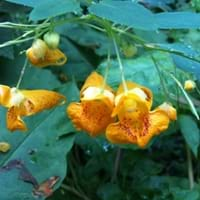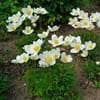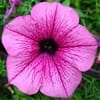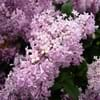Life Span
Perennial
Annual
Type
Tender Perennial
Fern, Succulent
Origin
Mediterranean
Africa, Canada, North America, United States
Types
Blue Anemone, Greek Windflower, Carolina Anemone, Chinese Anemone
impatiens balsaminak, impatiens hawkeri
Habitat
Wild
Grassland, River side
USDA Hardiness Zone
8-12
2-11
AHS Heat Zone
12-5
12 - 1
Sunset Zone
4, 5, 6, 7, 8, 9, 10, 11, 12, 13, 14, 15, 16, 17, 18, 19, 20, 21, 22, 23, 24
Not Available
Habit
Clump-Forming
Upright/Erect
Minimum Height
Not Available
Minimum Width
Not Available
Flower Color
Sky Blue
Yellow, Orange
Flower Color Modifier
Not Available
Bicolor
Fruit Color
Not Available
Green
Leaf Color in Spring
Green
Green
Leaf Color in Summer
Yellow, Green
Green
Leaf Color in Fall
Not Available
Green
Leaf Color in Winter
Not Available
Light Green
Leaf Shape
Compound
Elliptic, toothed
Plant Season
Spring
Summer, Fall
Sunlight
Partial Sun, Partial shade
Partial Sun, Partial shade
Type of Soil
Loam
Loam, Sand
The pH of Soil
Acidic, Neutral
Acidic, Neutral
Soil Drainage
Average
Average
Bloom Time
Early Spring, Spring, Late Spring, Early Summer
Summer, Late Summer, Early Fall
Tolerances
Salt
Pollution
Where to Plant?
Ground, Pot
Ground
How to Plant?
Seedlings
Stem Planting, Transplanting
Plant Maintenance
Medium
Low
Watering Requirements
Medium, Prefer drip-irrigation instead of Over-head watering, Use Mulches to help prevent water loss during hot and windy weather, Water Deeply
Needs less watering
In Summer
Lots of watering
Moderate
In Spring
Moderate
Moderate
In Winter
Average Water
Average Water
Soil pH
Acidic, Neutral
Acidic
Soil Drainage Capacity
Average
Clay, Moist
Sun Exposure
Partial Sun, Partial shade
Bright direct sunlight
Pruning
Prune prior to new growth, Remove dead or diseased plant parts, Remove deadheads
Prune lower leaves, Prune ocassionally
Fertilizers
All-Purpose Liquid Fertilizer
Fertilize only when soil is poor
Pests and Diseases
Botrytis collar rot, Crown gall, Cucumber mosaic, Downy mildew, Impatiens necrotic spot, Leaf curl, Phytophthora, Rhizoctonia crown rot, Root rot, Rust, Sclerotinia blight, Southern blight
Bacteria wilt, Downy mildew, Drought
Plant Tolerance
Drought
Drought, Dry soil
Flower Petal Number
Single
Single
Foliage Texture
Fine
Medium
Foliage Sheen
Matte
Matte
Attracts
Not Available
Bees, Butterflies, Hummingbirds
Allergy
Skin irritation
allergic conjunctivitis, Asthma, Runny nose
Aesthetic Uses
Not Used For Aesthetic Purpose
Cottage Garden
Beauty Benefits
Not Available
Poison Ivy
Edible Uses
Yes
Sometimes
Environmental Uses
Air purification
soil erosion prevension on hill slopes
Medicinal Uses
Asthma, Cough, Gout, Menstrual Disorders, Stomach pain
antimicrobial, treating poison ivy, Upset stomach
Part of Plant Used
Flowers, Leaves
Bark, Leaves
Other Uses
Not Available
Can be made into a herbal tea
Used As Indoor Plant
No
No
Used As Outdoor Plant
Yes
Yes
Garden Design
Bedding Plant, Container, Mixed Border, Rock Garden / Wall, Wildflower
Cottage garden
Botanical Name
ANEMONE 'Harmony Blue'( HARMONY SERIES)
IMPATIENS capensis
Common Name
Anemone, Harmony Blue Anemone
Jewelweed
In Hindi
रत्नज्योति
Not Available
In German
Anemone
Impatiens capensis
In French
Anémone
Impatiente du Cap
In Spanish
Anémona
Impatiens capensis
In Greek
ανεμώνη
Impatiens capensis
In Portuguese
Relutantemente
Impatiens capensis
In Polish
Zawilec
Impatiens capensis
In Latin
VivoSocial
Impatiens capensis
Phylum
Magnoliophyta
Magnoliophyta
Class
Magnoliopsida
Magnoliopsida
Order
Ranunculales
Geraniales
Family
Ranunculaceae
Balsaminaceae
Clade
Not Available
Dicotyledonous
Tribe
Not Available
Not Available
Subfamily
Not Available
Not Available
Importance of Anemone and Jewelweed
Want to have the most appropriate plant for your garden? You might want to know the importance of Anemone and Jewelweed. Basically, these two plants vary in many aspects. Compare Anemone and Jewelweed as they differ in many characteristics such as their life, care, benefits, facts, etc. Every gardener must at least have the slightest clue about the plants he wants to plant in his garden. Compare their benefits, which differ in many ways like facts and uses. The medicinal use of Anemone is Asthma, Cough, Gout, Menstrual Disorders and Stomach pain whereas of Jewelweed is antimicrobial, treating poison ivy and Upset stomach. Anemone has beauty benefits as follows: Not Available while Jewelweed has beauty benefits as follows: Not Available.
Compare Facts of Anemone vs Jewelweed
How to choose the best garden plant for your garden depending upon its facts? Here garden plant comparison will help you to solve this query. Compare the facts of Anemone vs Jewelweed and know which one to choose. As garden plants have benefits and other uses, allergy is also a major drawback of plants for some people. Allergic reactions of Anemone are Skin irritation whereas of Jewelweed have allergic conjunctivitis, Asthma and Runny nose respectively. Having a fruit bearing plant in your garden can be a plus point of your garden. Anemone has no showy fruits and Jewelweed has no showy fruits. Also Anemone is not flowering and Jewelweed is not flowering . You can compare Anemone and Jewelweed facts and facts of other plants too.





